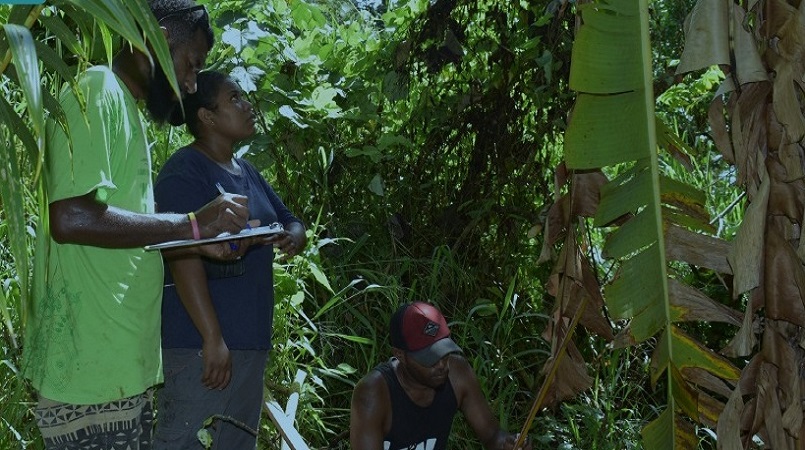
A research and survey on the different types of bananas in Vanuatu is currently underway.
A team comprising of Vanuatu Agriculture Research and Technical Centre (VARTC) in collaboration with the Department of Agriculture and Rural Development (DARD) is touring identified research sites throughout the six provinces of Vanuatu to collect the different species of banana and their genetic characteristics.
The main purpose of the banana research is to recollect, revive and re-establish a Vanuatu banana collection at VARTC on Santo.
“The purpose of this banana project is to revive our traditional bananas in Vanuatu,” said Juliene Kaoh, VARTC Banana project field supervisor.
There was a banana collection taken in the 1990s and another one in 2010.
The collection was not properly maintained for many reasons.
“Some of these reasons are cyclone, drought and farming system. So the main purpose of this project is to re-establish the banana collection and maintain it as many traditional bananas are gradually disappearing as a result of climate change,” Ms Kaoh continued.
The research sites are selected according to the previous collection and research work done on bananas, aiming at collecting the same varieties and also identifying and collect new species.
The project identified some main islands of Vanuatu starting from Torba to Tafea provinces, working in close collaboration with DARD’s Provincial Agriculture Officers (PAOs) and Assistant Agriculture Officers (AAOs), to identify the diversity of bananas that farmers are cultivating and in what location.
Research will be done on Vanua Lava in Torba province, Santo and Malo in Sanma province, Efate island in Shefa province, Tanna in Tafea province, Malekula in Malampa province and Ambae in Penama province.
“Our main objective now is recollection, collecting of bananas that have been recorded in VARTC’s database or new species. After the collection of bananas, we will set up a collection plot and further analysis will be implemented. We have five main groups of bananas in Hawaiian names like popo’u’lu, maoli, fehi, iholena and other bananas or desert type bananas. Inside these main five groups, we have many different types of bananas,” Ms Kaoh added.
During the research, dialogue with farmers is very crucial as questions are raised about the types of bananas, origin of the bananas, taste of the bananas, performance of bananas, diseases and surveying of bananas.
“An example is Santo. Farmers said no disease has been found yet on bananas but the main problem is long period of drought when our traditional bananas are not resistant and during cyclones bananas are the first crops to be affected.
“This is an issue that VARTC and DARD will be working on to assist farmers to address this issue so this is an objective for the research centre after establishing the collection,” said Ms Kaoh.
Banana is a source of food that many farmers are cultivating but many also don’t add value to it like yam and taro.
“Banana plays an important role in terms of nutrition and is a stable food so farmers need to add that value to bananas as well and my advice is we have to preserve our traditional bananas,” Ms Kaoh concluded.
Photo supplied. Caption: Banana research team in North Efate
